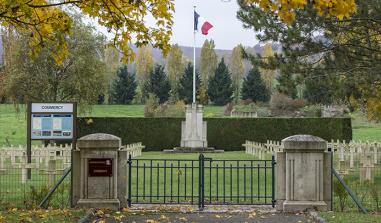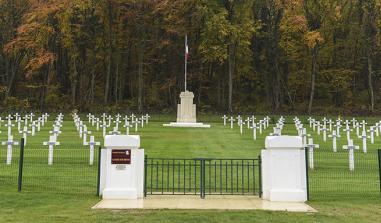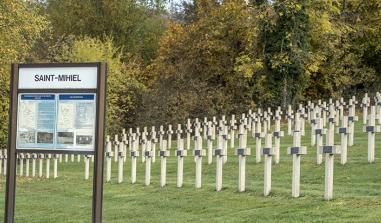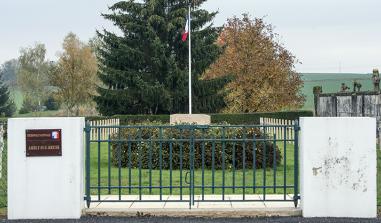Avocourt National Cemetery
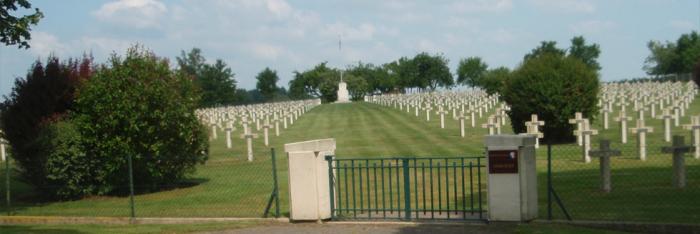
Avocourt. Source : MINDEF/SGA/DMPA-ONACVG
Clic here to view the cemetery’s information panel 
Avocourt National Cemetery contains the remains of French soldiers killed in the battles of Verdun, in particular those who died on the iconic sites of Hill 304 and Mort-Homme. Established at the time of the Verdun offensive in 1916, the cemetery was redeveloped in 1921-25, then in 1930-34, to accommodate the bodies of soldiers killed in the Avocourt sector or exhumed from the temporary cemeteries of Jubécourt and Récicourt, together with bodies discovered more specifically on the battlefield on the left bank of the Meuse (Hill 304 and Mort-Homme). In 1945, the bodies of French marine infantrymen, or marsouins, killed in 1940 on Hill 304 and buried in the commune of Esnes’ military burial plot, were transferred here. Over 1 800 French soldiers killed in the First World War and 49 soldiers killed in the Battle of France in 1940 are laid to rest here.
The Battle of Verdun, 1916-18
During the Battle of the Marne, Verdun and its ring of forts formed an entrenched camp that provided solid support for General Sarrail’s 3rd Army. The enemy sought to bring down this stronghold with two attacks: one to the west against Revigny-sur-Ornain, the other to the east against Fort Troyon. Both attacks failed. Throughout 1915, General Joffre launched bloody operations to the east against the Saint Mihiel salient and, to the west, deployed the 3rd and 4th Armies to defend the Argonne. These local combats descended into tunnel warfare and became a real test for soldiers’ morale.
It was in this sector, therefore, where French positions were poorly maintained, that Germany’s General Falkenhayn decided to launch an offensive to wear down the French Army.
On 21 February 1916, Operation Gericht went ahead against the French positions. After a violent bombardment of the right bank of the Meuse and the town, the Germans advanced over a ravaged landscape. In four days, they progressed four miles, despite determined resistance from the 30th Army Corps, defending the Bois des Caures woods.
On 25 February, the enemy took Fort Douaumont, while General Pétain’s 2nd Army was tasked with defending Verdun. Pétain organised the front and supplies. The Bar-le-Duc to Verdun road became the main artery, the “Sacred Way” which, day and night, brought supplies for the defence of Verdun.
Stalled outside Vaux and Douaumont, on 6 March the German 5th Army expanded operations on the left bank of the Meuse. These two ridges, the only natural obstacles controlling access to Verdun, became the most disputed positions on the left bank of the Meuse. Within six days, the Germans had reached Mort-Homme. On the 20th, they sent in the 11th Bavarian Division to take the village of Avocourt. An initial attack with flame-throwers was successful, but the French counter-attack recaptured the wood and the sector known as the “Avocourt réduit”. The troops, without supplies for several days, were exhausted. On 29 March, the wood was retaken. On 9 April, the enemy pushed through the Bois des Corbeaux ravine, in a joint operation by three divisions. The French defence held firm without retreating, and General Pétain declared in his general orders, “Keep it up, men. We shall get them!” The fight continued, and the enemy were allowed to advance little more than two miles. In June, the French troops resisted on both sides of the Meuse. The Germans threw everything they had into the battle, launching attack after attack. Without success, they occupied part of Mort-Homme, which they fortified.
In August 1917, the French recaptured Hill 304 and Mort-Homme, and completely freed up Verdun. But the struggle went on along the Caurières ridge, where enemy artillery deployed new mustard gas shells. From the 24th onwards, Mort-Homme and its tunnels, including Les Corbeaux, and also Hill 304, were recaptured once and for all.
Three quarters of the French Army passed through Verdun, where losses on 15 July amounted to 275 000 dead, wounded or captured. The same was true for the German Army.
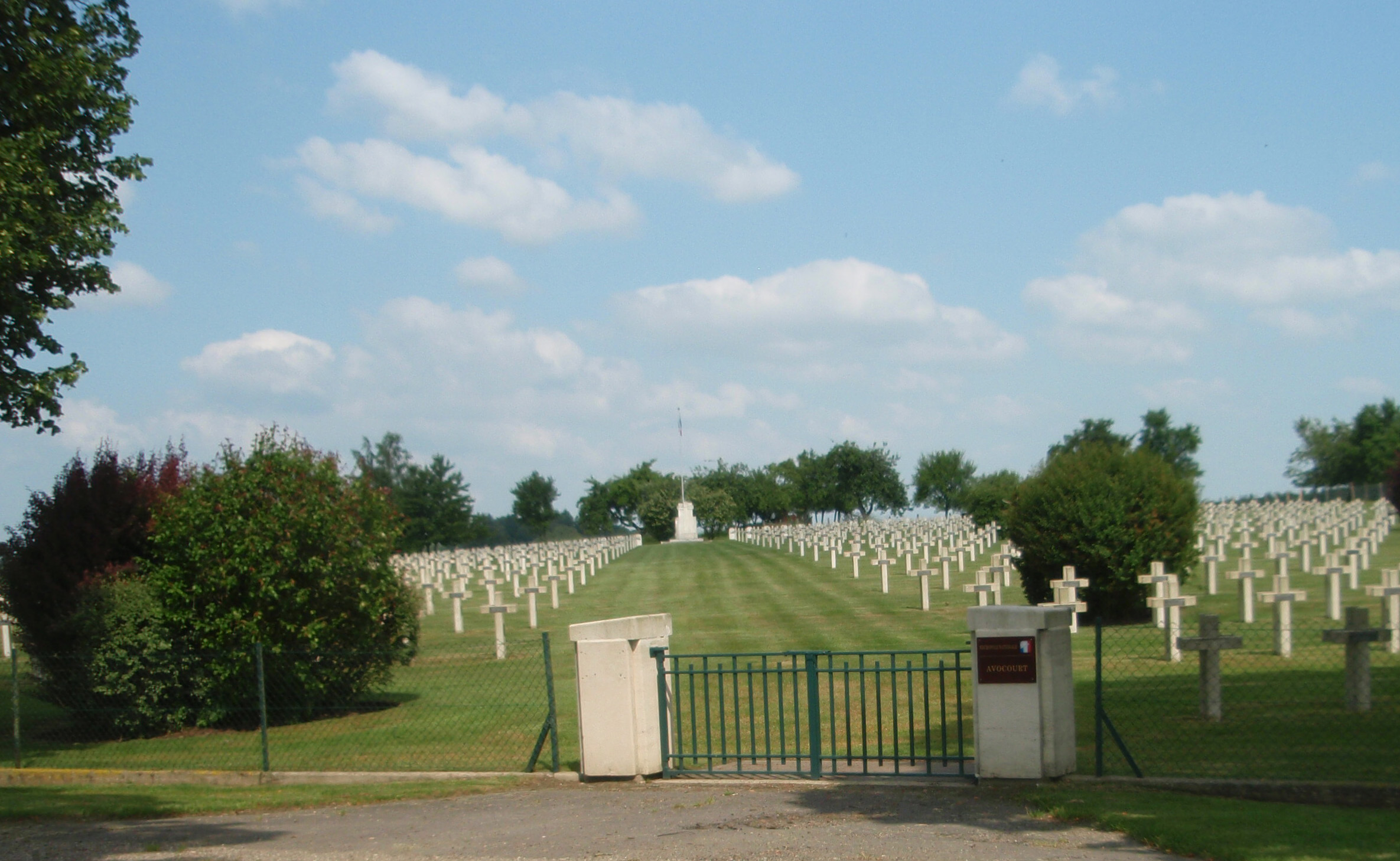
Avocourt. Source : MINDEF/SGA/DMPA-ONACVG
Avocourt. © Guillaume Pichard
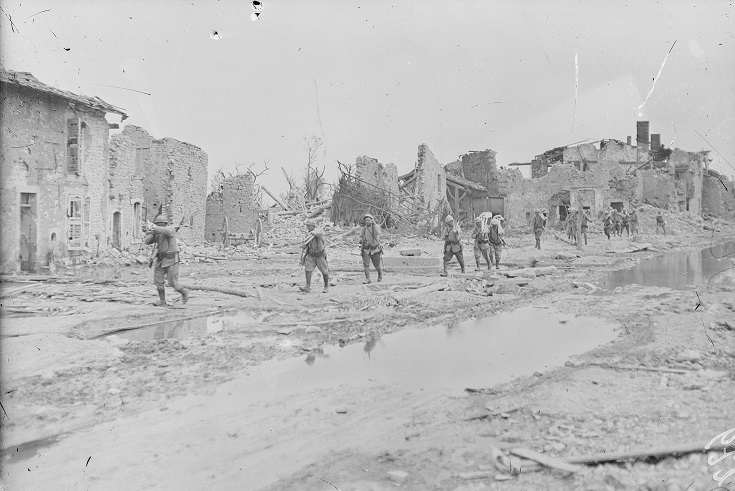
French soldiers walk among the ruins of the village of Esnes-en-Argonne, February/March 1917. Located south of Hill 304, the village was a strategic location in the conquest and control of this position and of Mort-Homme. Both the village and Chateau Bras were devastated by shells. The village received an army citation and was rebuilt after the war. © ECPAD
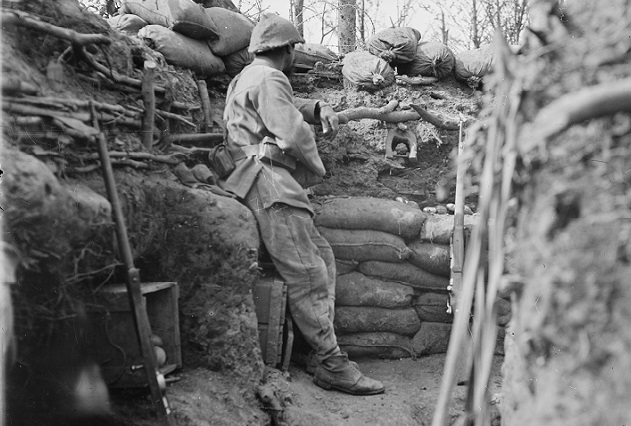
French lookout at a trench embrasure in the Avocourt réduit, 23 July 1916. Located at the westernmost point of the Verdun battlefield, the Avocourt réduit was the scene of bitter fighting between 20 and 29 March 1916. © ECPAD
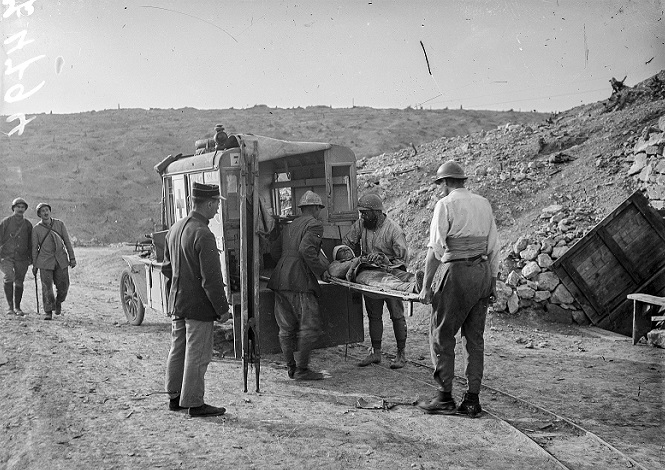
Evacuation of a wounded soldier in the Avocourt sector, April 1916. From autumn 1914, the French Army was equipped with motorised ambulances and special vehicles to enable the evacuation of the wounded behind the lines. The use of these rudimentary vehicles meant that a great many lives could be saved. © ECPAD
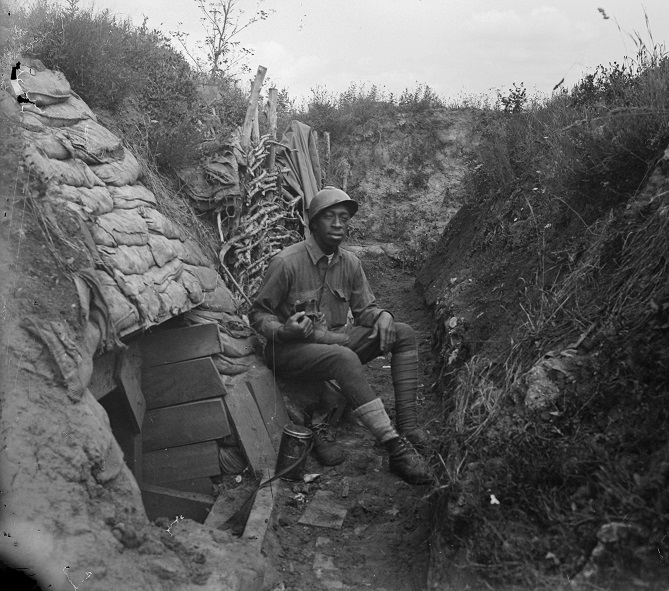
African American soldier of the 371st Infantry Regiment at the entrance to a shelter, Avocourt, April 1917. The US troops of General Pershing were stationed in the Meuse from July 1917. But American assistance was slow to come. General Pétain urged Pershing to deploy troops. When he did so, it was the 93rd Infantry Division, comprised of black soldiers, which he assigned to the front. Tensions between the French and US commands soon emerged, as Pershing feared that contact with the French troops would cause his men to seek greater freedom. Alongside the French, each black American soldier of the four regiments of the 93rd Division fought with distinction. © ECPAD
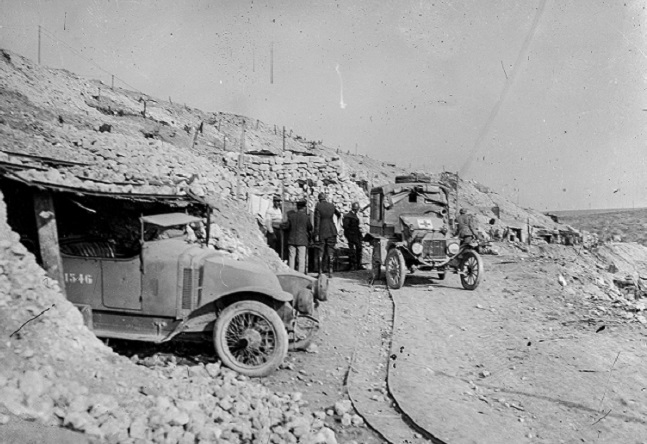
American ambulance cars at a first-aid post, September 1917. Motorised ambulances, some of them specialised (surgery, radiology, etc.), served right at the heart of the front. They were funded by the Red Cross committees of both Allied and neutral countries. © ECPAD
Practical information
Avocourt
Free visits all year long
Read more
Read more
Comité Départemental du Tourisme de la Meuse
33, rue des Grangettes - 55012 Bar-le-Duc Cedex
Tél : 03 29 45 78 40
Commemorative sites
- Belleray French national war cemetery
- Bras-sur-Meuse National Cemetery
- Chattancourt National Cemetery
- Bois de Béthelainville French national war cemetery
- Douaumont National Cemetery and Ossuary
- Esnes-en-Argonne National Cemetery
- Brocourt-en-Argonne French national war cemetery
- Le Faubourg Pavé Verdun
- Glorieux




